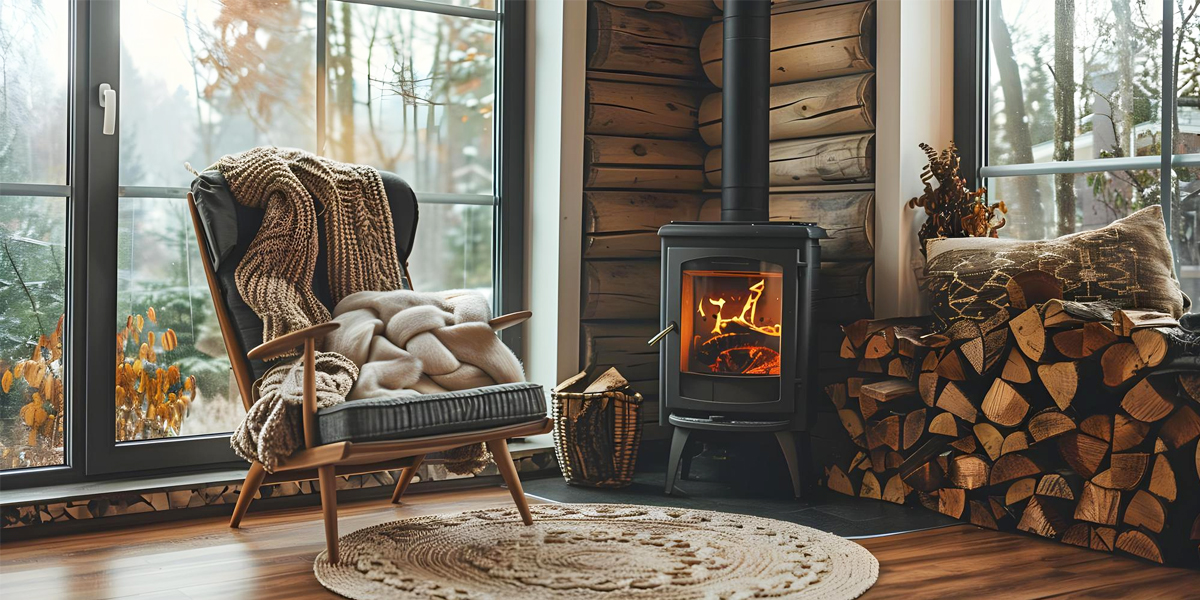The Top 5 Log Burner Questions Answered: Your Ultimate Guide to Cosy Home Heating

Many homeowners are turning to wood burning stoves as a stylish and efficient way to heat their homes. However, with so many options available, it's easy to feel overwhelmed when trying to choose the right one for your needs. To help you navigate the world of log burners, we've compiled a list of the top 5 most frequently asked questions and provided answers to each one. Whether you're considering installing a log burner for the first time or looking to upgrade your current setup, this comprehensive guide will provide you with all the information you need to make an informed decision.
-
What are the benefits of using a wood burning or multi-fuel stove? Stoves offer numerous benefits for homeowners. Not only do they provide an efficient and cost-effective way to heat your home, but they also create a cosy and inviting atmosphere that's perfect for chilly winter nights. Additionally, log burners are environmentally friendly, as they burn logs, which are renewable and sustainable sources of fuel. With their stylish designs and versatile placement options, wood burners can also enhance the aesthetic appeal of any room, adding value to your home while keeping you warm and comfortable.
-
How do I choose the right size log burner for my home? Choosing the right size log burner is essential to ensure that it effectively heats your home without wasting energy. To determine the appropriate size for your space, you'll need to consider factors such as the size of the room, the insulation levels, and the layout of your home. Generally, larger rooms will require a higher heat output, so be sure to choose a log burner with a suitable kW rating. It's also essential to consult with a professional installer who can assess your specific needs and recommend the best option for your home.
-
What type of fuel should I use in my stove? When it comes to fuel options for your stove, you have two main choices available - on a dedicated wood burner, you can only burn wood logs. On a multi-fuel stove, you can burn logs or smokeless fuels.
When it comes to choosing between logs and smokeless fuels for a modern multi-fuel stove, many homeowners prefer logs for several reasons. Firstly, logs provide a more authentic and traditional fire experience, with crackling flames and a pleasant aroma that adds to the ambience of any room.
Additionally, logs are often more readily available and cost-effective compared to smokeless fuels, making them a convenient choice for many homeowners. With the option to source logs locally or even collect them yourself, you can enjoy the added benefit of supporting sustainable forestry practices and reducing your carbon footprint.
Furthermore, logs are a renewable and environmentally friendly fuel option, as they are sourced from responsibly managed forests and produce minimal emissions when burned cleanly. This eco-conscious choice is increasingly important for homeowners looking to reduce their environmental impact and create a greener home heating solution.
Logs offer greater flexibility and versatility in terms of heat output and burning characteristics. Depending on the type of wood used and how it's seasoned, you can adjust the size and intensity of the fire to suit your heating needs, providing optimal comfort and efficiency throughout the winter months.
Indeed, whilst burning smokeless fuels offer benefits for some homeowners, it's crucial to note that they can burn at high temperatures, potentially causing damage to stove components over time. When Heat Installers visit a property, it's often apparent whether a stove has been primarily burning wood or smokeless fuels. Stoves used with smokeless fuels may exhibit signs of wear more prominently, such as discoloration, warping, or deterioration of internal components. -
How do I maintain my log burner? Proper maintenance is essential to ensure that your log burner operates safely and efficiently. Regular cleaning is necessary to remove ash and soot buildup from the stove and flue, as well as to prevent creosote from forming, which can increase the risk of chimney fires. It's also crucial to inspect the stove's seals, gaskets, and glass regularly to ensure that they are in good condition and replace them if necessary. Additionally, you should have your log burner serviced annually by a qualified professional to check for any issues and ensure that it continues to operate safely and efficiently.
-
Are log burners suitable for all homes? While log burners can be a great heating option for many homes, they may not be suitable for all situations. For example, if you live in a smoke control area such as built-up areas in Greater Manchester and Cheshire, you'll need to choose a log burner that is approved for use in these areas or opt for a smokeless fuel option. Additionally, if you have a small or poorly insulated home, you may find that a log burner struggles to heat the space effectively. It's essential to consider factors such as your home's size, layout, and location before investing in a log burner to ensure that it's the right choice for your needs.
Wood Burning and Multi-Fuel Stoves offer an excellent heating solution for many homeowners, providing warmth, comfort, and ambience to any space. By considering factors such as size, fuel type, maintenance requirements, and suitability for your home, you can choose the perfect stove to keep you cosy all winter long. With the answers to these top 5 log burner questions, you'll be well-equipped to make an informed decision and enjoy the benefits of a stylish and efficient heating solution in your home.
